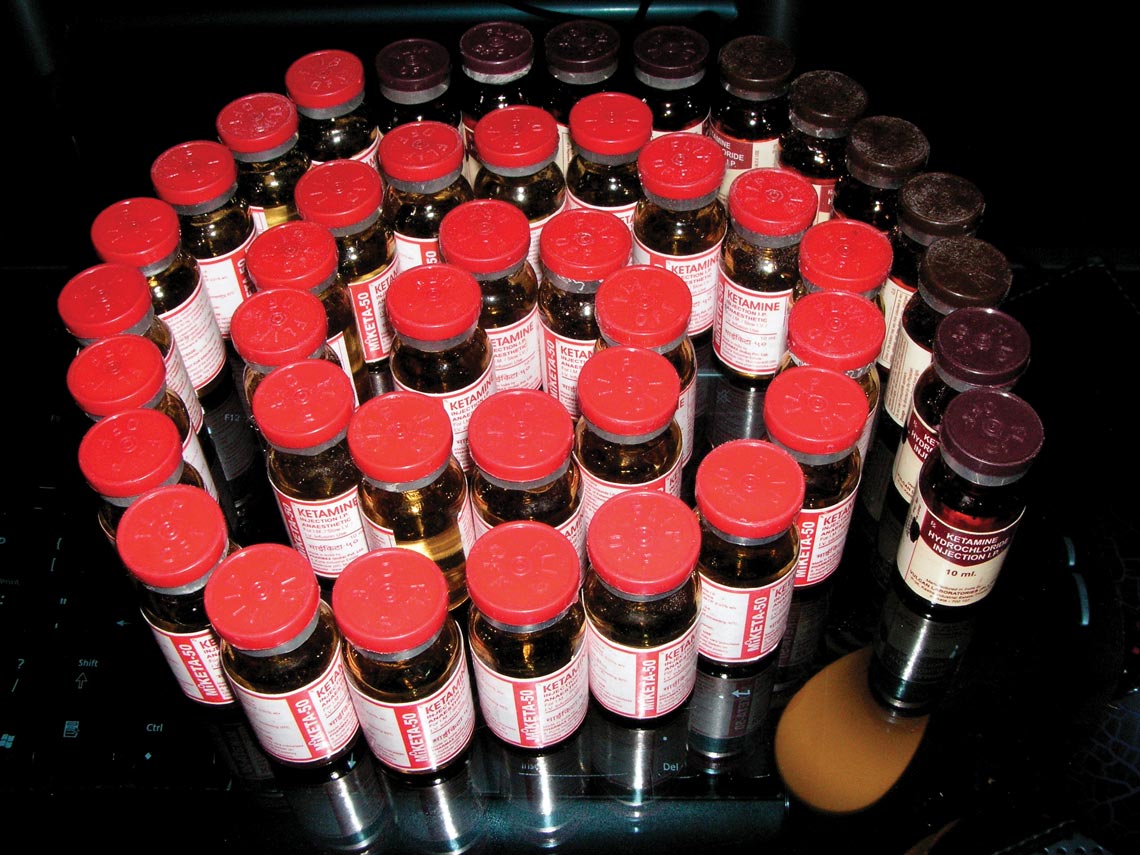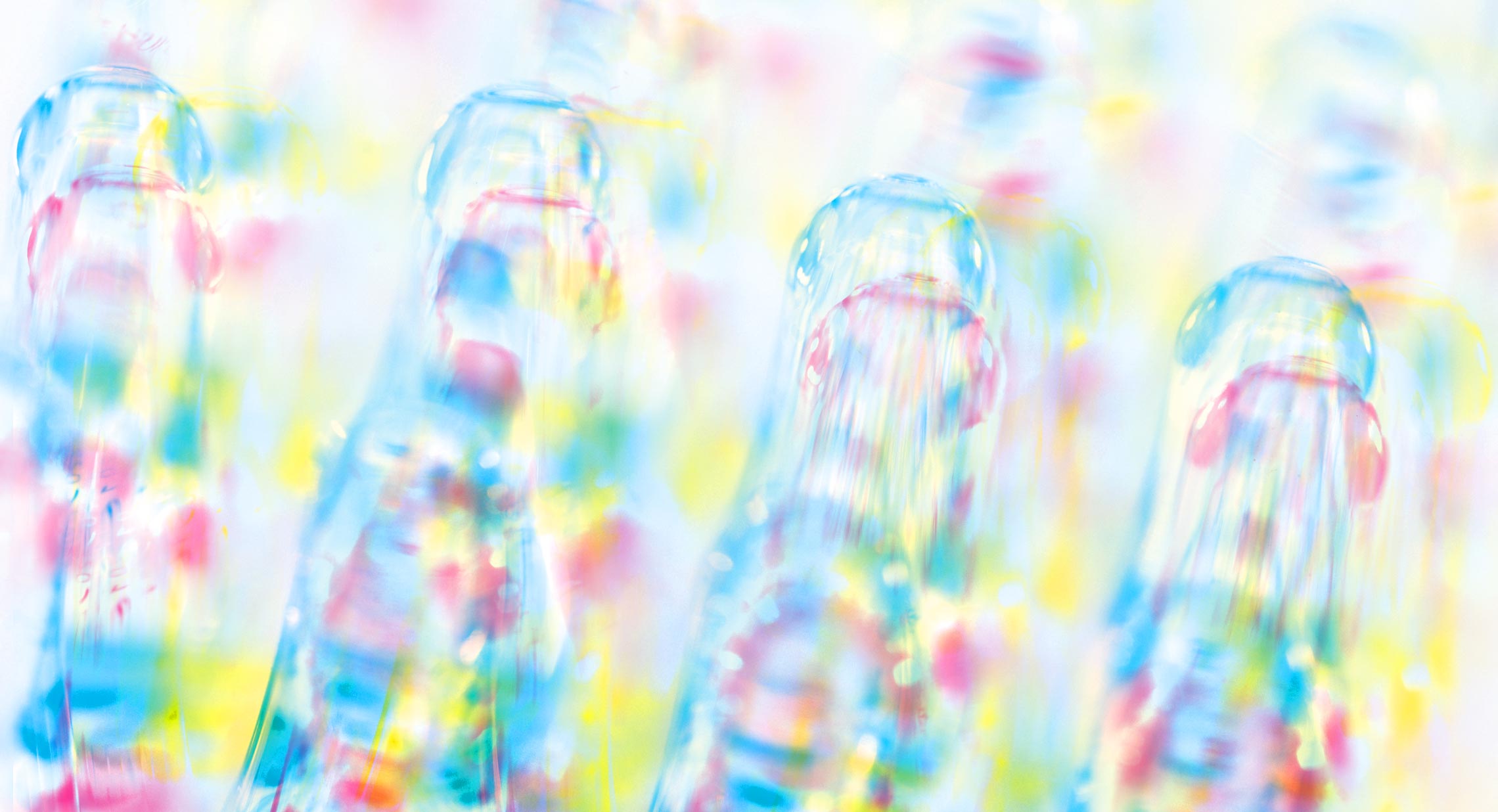In September 2018, pharmaceutical company Janssen submitted an application to the US Food and Drug Administration seeking approval of a new use for an old medication. The laboratory, owned by US pharmaceutical giant Johnson & Johnson, asked the Food and Drug Administration (FDA) to approve the use of ketamine, a synthetic drug created in the 1960s, as a remedy for depression in patients that do not respond to traditional antidepressants—known in the medical field as a refractory condition. Over the past 20 years, a growing number of studies, mostly involving few participants and short durations, have suggested that ketamine can act as a fast and powerful antidepressant at low doses.
A single dose injected into the muscle or bloodstream could significantly reduce feelings of sadness and hopelessness, lack of motivation, low self-esteem, and even suicidal thoughts, for a relatively long period of time (about a week). “At doses 10 to 20 times lower than used as an anesthetic, it can help lift a patient off rock bottom,” says psychiatrist Acioly Lacerda, a professor at the Federal University of São Paulo (UNIFESP) and one of the pioneers of experimental ketamine use against depression in Brazil.
• The other side of ayahuasca
One of the most common mental health problems in the world, depression affects 300 million people, according to the World Health Organization, and as many as half of those treated do not respond to currently available antidepressants. With an eye on this market, Janssen has developed a type of ketamine that is simpler to use for people with depression: a nasal spray to be administered under medical supervision.
If approved by the FDA, the ketamine spray would be the first psychedelic compound—a class of drugs that alter the user’s perception of reality—to be used to treat psychiatric diseases with the approval of a health authority. Mental health professionals are showing an increasing interest in the therapeutic use of psychedelics, many of which are in the earliest stages of testing.
The drug created by Janssen is at the most advanced stage of human testing, known as phase 3 clinical trials, which measure the effectiveness of the product. It is the last stage prior to a medication being made commercially available. In May, a research group led by psychiatrist Carla Canuso, director of clinical development at Johnson & Johnson, published an article on the American Journal of Psychiatry website presenting the results of the phase 2 trials. Conducted together with researchers from Yale University, USA, the study evaluated the safety and possible efficacy of the spray. In the trial, 68 participants suffering refractory depression and at immediate risk of suicide were randomly assigned to two groups, one of which was given intranasal ketamine twice a week for four weeks, and the other a control group that received an innocuous compound (placebo). Both groups were also treated with a conventional antidepressant. According to the study, those given ketamine improved faster than the control group.
Preliminary results from two phase 3 clinical trials involving hundreds of participants at 60 clinics and hospitals in several countries, including Brazil, were presented at the annual meeting of the American Psychiatric Association in May, and reinforced previous findings. “If the response to intranasal ketamine continues to prove superior to the placebo in the studies that are currently ending, the FDA could approve the treatment within a year,” says psychiatrist Lucas Quarantini, a professor at the Federal University of Bahia (UFBA), who like Lacerda, is taking part in trials involving the Janssen drug.
Approval of the drug for psychiatric use is being considered by the health authorities
Off-label use
Even without approval from the health authorities, injectable ketamine is already being prescribed in the USA, UK, and Brazil, to combat refractory depression. In these countries, the compound is registered only as an anesthetic. Psychiatric use is not included in the patient information leaflet and is thus considered off-label (a common practice that according to some studies, accounts for up to 40% of drugs prescribed to adults). Physicians thus assume all responsibility and risk when prescribing injectable ketamine and should only recommend it if the benefits to the patient outweigh the risks—including potential cardiovascular problems (in some people, the drug temporarily raises blood pressure) and dependency. “Each individual physician bears the responsibility for off-label prescription,” states the Brazilian Health Regulatory Agency (ANVISA), which regulates the sale of medicines in Brazil.
The Cristália laboratory, the only company producing ketamine in the country, submitted a request to ANVISA eight months ago to add treatment for depression to the patient information leaflet. “We have gathered numerous studies showing that the product can be safely and effectively used against depression, and now we are waiting for a response,” says Dr. Ogari Pacheco, cofounder of Cristália. Approval by the health authority would help to support doctors, who put themselves at risk of legal action when prescribing the drug for off-label use. It would also represent an initial step toward making it possible to ask the Ministry of Health to include ketamine, an inexpensive drug (one dose costs between R$5 and R$10), on the list of medicines and procedures offered by the Brazilian public health system (SUS) and private health plans.
Today, public clinics and hospitals that treat depression with ketamine need to ask the anesthesiology department to purchase the drug. In private medicine, physicians must have a license to administer injectable drugs, in addition to specific equipment for cardiorespiratory monitoring and resuscitation. Each treatment ends up costing between R$600 and R$1,200 because of the infrastructure required and the cost of medical and nursing teams.
Lacerda estimates that about 20 Brazilian clinics and hospitals (at least six linked to public universities) already offer ketamine as a treatment for depression. At UNIFESP, he coordinates a team that works Monday to Friday mornings in two outpatient clinics, caring for SUS patients only. A total of 10 patients are treated with ketamine per day at the two centers. “In four years, this consortium of clinics and hospitals has already administered about 6,000 doses of ketamine to approximately 1,200 patients,” he says. “Between 60% and 65% of them showed considerable improvement,” notes the researcher.
About five years ago, Quarantini and Lacerda worked in partnership. They tested administering ketamine to 27 patients (23 with depression and 4 with bipolar disorder) for less time—just 10 minutes—and had similar results to the usual treatment of 40 minutes. Last year, the journal Schizophrenia Research reported on a similar experimental treatment of six patients with schizophrenia. In the study, low doses of ketamine reduced the loss of ability to feel pleasure (anhedonia), a characteristic of both depression and schizophrenia. In another study, they evaluated the effects on 63 people with depression of the two varieties of ketamine available on the market: S-ketamine (or esketamine), used in the Janssen nasal spray and produced by the Cristália laboratory in Brazil, and the ketamine used in anesthesia, known as a racemic, which is a mixture of S-ketamine and R-ketamine (the two have different spatial structures). According to the data, which has been accepted for publication, S-ketamine worked just as well as the racemic.
“There is reason to be optimistic about the impact ketamine could have on the strain that depression puts on the public health system,” psychiatrist John Krystal, a professor at Yale University, said in an interview with Pesquisa FAPESP. “There has never been any other drug that acts so quickly, efficiently, and persistently.”
Krystal was one of the pioneers in using ketamine to treat psychiatric disorders and now owns a number of the patents licensed by Janssen for intranasal administration and its use to treat suicidal impulses. In the mid-1990s, he began investigating the effect of low doses of the anesthetic on people’s moods and in 2000 he published the first evidence that ketamine had a rapid antidepressant effect on humans. In a study of only eight people, half reported a 50% reduction of symptoms one day after a single application. “We had not anticipated the robustness and speed of the antidepressant effects of ketamine in humans,” says Krystal.

Psychonaught/Wikimedia Commons
Bottles of ketamine, a synthetic drug created in the 1960sPsychonaught/Wikimedia CommonsA lack of long-term data
In subsequent research, even greater proportions of people with depressive symptoms felt improvements within the first hour after treatment, such as 71% of participants in a study by Carlos Zarate, from the US National Institute of Mental Health. Similar results were seen in the treatment of bipolar disorder. Other studies have suggested that ketamine may provide a faster and greater reduction in symptoms of depression than electroconvulsive (electroshock) therapy, the gold standard in refractory depression treatment, and that in the initial weeks, it could be more effective than the other 12 drugs currently in use.
Despite the optimism, there are still grounds for caution. In 2017, researchers from an American Psychiatric Association task force published an article in the journal JAMA Psychiatry warning of the limited knowledge regarding the use of ketamine to treat depression and other mood disorders. Most studies are based on small samples, with limited information about the safety of long-term use, they said. There is also a lack of data on long-term efficacy, and there are no phase 3 clinical trials of injectable ketamine. According to the authors, such trials may never be carried out for economic reasons (they are expensive and there may be no industry interest in producing such a cheap medication). For this reason, they recommend that doctors take great care when selecting patients.
Other studies, also small and sometimes funded by the pharmaceutical industry, have examined the most appropriate dosage, strategies for prolonging beneficial effects by increasing the number of applications (between 5 and 8) per treatment cycle, and the best administration methods. Intravenous administration, which can be easily interrupted in the event of any problems, is preferred by ketamine clinics, which have proliferated in the USA and according to a September 2018 report in the online journal Stat, may even be giving the drug to people who do not need it.
At UNIFESP, Lacerda supports subcutaneous injections. With this method, the drug is stored in the adipose tissue and released gradually into the bloodstream, reducing unpleasant side-effects, such as nausea, dissociation, and an altered perception of the environment without losing the notion of reality. Subcutaneous administration can be performed by a nursing assistant and a doctor, eliminating the need for an anesthesiologist. “As well as being a safe strategy, it is financially more viable for potential use on the SUS one day,” says the psychiatrist.
Should the FDA approve the Janssen drug, it will only be permitted for sale to clinics and hospitals, as will the injectable compound, to avoid the risk of abuse and addiction. Because of its hallucinogenic effects, which include out-of-body experiences and causing nearby objects and people to appear brighter, ketamine has been widely used in the USA and other countries as a recreational drug since the late 1960s. It has been known as K, superK, Kitty, Vitamin K, and Cat Valium, among other nicknames. Recreational users either inject it into the muscle or snort the powdered version, which is used in veterinary medicine. “Those who abuse the drug take doses much higher than used in anesthetics and up to 40 times greater than is used against depression,” says Lacerda.
Scientific articles
CANUSO, C. et al. Efficacy and safety of intranasal esketamine for the rapid reduction of symptoms of depression and suicidality in patients at imminent risk for suicide: Results of a double-blind, randomized, placebo-controlled study. American Journal of Psychiatry. v. 175, n. 7, p. 620-30. 1º jul. 2018.
AJUB, E. e LACERDA, A. L. T. Efficacy of esketamine in the treatment of depression with psychotic features: A case series. Biological Psychiatry. v. 83, p. 15-6. 2018.
NUNES, M. V. et al. Efficacy of esketamine in the treatment of negative symptoms in schizophrenia – A case series. Schizophrenia Research. v. 202, p. 394-96. 2018
